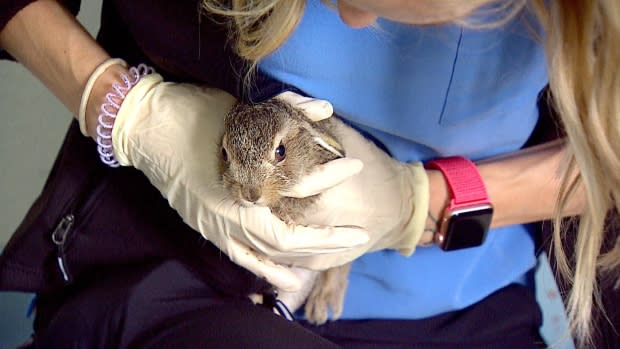Alberta wildlife rehab preps for impending spring 'baby boom'
As an Alberta wildlife rehab centre preps for the wave of baby patients it admits each spring, staff are hoping to educate concerned citizens that not all seemingly orphaned baby animals need to be brought in.
"Right now we're kind of waiting for the impending baby boom," says Erin Casper, a rehabilitation manager and biologist at the Alberta Institute for Wildlife Conservation (AIWC).
Casper says right now, the centre is caring for about 30 wild animals, with the goal of releasing them once they've been nursed back to health.
The newest patients are four northern flying squirrel babies who are only three weeks old, and require around-the-clock care.
But, she says, that number will likely shoot up to between 100 and 200 patients during the next few weeks.
"We're certain to see some interesting patients."

Casper says 90 per cent of patients they see are brought in as a result of human conflict. Sometimes that means a duck tangled in fishing line, or a rabbit that was poisoned, but often animals that are believed to be orphaned are mistakenly brought in by well-meaning Albertans.
"The best way to raise a baby is to let the moms raise the baby themselves … the humans can never do quite as good as the moms can," she says.
In many species, it's a mother's defense tactic to leave a baby alone to make it harder for a predator to spot them, she says.
She suggests people call AIWC to make sure a baby animal is truly orphaned before bringing it in.
It can cost hundreds to rehabilitate each animal, and babies require special, 24/7 care.
The centre is hoping to raise $15,000 by the end of May to cope with the influx of patients.

